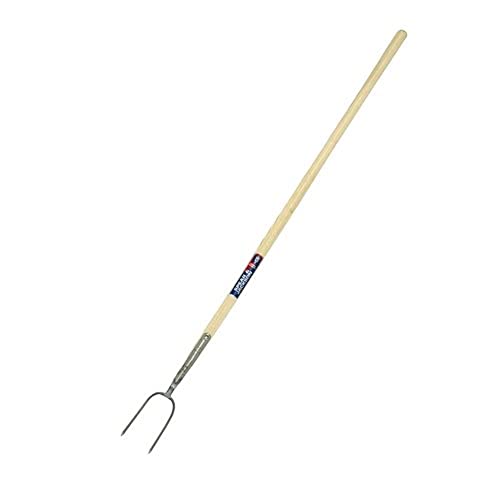Metal Forks: A Classic Choice for Utensils
When it comes to utensil forks, one of the most common materials used is metal. Metal forks have been a staple in kitchens around the world for centuries. They are durable, heat-resistant, and versatile, making them suitable for a wide range of cooking and dining needs.
Metal utensil forks are typically made from stainless steel or silver, although other metals such as titanium and aluminum may also be used. Stainless steel is the most popular choice due to its corrosion-resistant properties and affordability. It can withstand regular use, resist staining, and is easy to clean.
Silver forks, on the other hand, are often used for formal dining occasions or special events. They have a more elegant and luxurious appearance but require more care and maintenance than stainless steel forks. Silver utensils need to be polished regularly to maintain their shine and prevent tarnishing.
Plastic Forks: Lightweight and Disposable
Plastic forks are another common choice for utensils, especially in fast food restaurants, outdoor events, and picnics. They are lightweight, affordable, and disposable, making cleanup quick and easy. Plastic forks are made from various types of plastic, including polystyrene, polypropylene, and polycarbonate.
Polystyrene forks are the most common type of plastic forks. They are inexpensive, lightweight, and can handle regular use. However, they are not microwave-safe and may leach harmful chemicals when in contact with hot food or beverages. Therefore, it is important to avoid using polystyrene forks for heating or reheating purposes.
Polypropylene forks are more heat-resistant and microwave-safe compared to polystyrene forks. They are often used for takeout meals or microwaveable frozen food. Polypropylene is a durable and versatile plastic that can withstand high temperatures without melting or deforming.
Polycarbonate forks are the strongest and most heat-resistant plastic forks available. They are often used in professional kitchens or catering services where durability and longevity are essential. Polycarbonate utensil forks can withstand heavy use, high temperatures, and are dishwasher-safe.
Wooden Forks: Eco-Friendly and Biodegradable
Wooden forks are becoming increasingly popular as eco-friendly alternatives to plastic or metal forks. They are made from renewable resources and biodegradable, making them a more sustainable choice for the environment. Wooden utensil forks are typically made from birchwood, bamboo, or other types of hardwood.
Birchwood forks are lightweight, smooth, and have a natural appearance. They are often used for casual dining or outdoor events. Birchwood is a renewable resource that grows quickly, making it an environmentally friendly option.
Bamboo forks, on the other hand, are known for their durability and strength. Bamboo is a fast-growing grass that is sustainable and does not require harmful pesticides or fertilizers to grow. Bamboo utensils can be reused multiple times and are biodegradable at the end of their lifespan.
Other types of hardwood, such as maple or beechwood, may also be used to make wooden forks. These types of wood are more durable and resistant to moisture, making them suitable for longer-term use in commercial or professional kitchens.
Ceramic and Glass Forks: Elegant and Decorative
While less common than metal, plastic, or wooden forks, ceramic and glass forks are sometimes used for decorative or special occasions. These utensils can add an elegant and refined touch to a formal dining table setting or a special event.
Ceramic forks are typically made from porcelain or stoneware. They are delicate, beautifully designed, and often come in matching sets with other ceramic dining utensils. Ceramic forks are not as durable as metal or plastic forks and require more careful handling and storage to prevent chipping or cracking.
Glass forks are also used for decorative purposes, especially in fine dining restaurants or upscale events. They can be made from clear, colored, or etched glass and can be quite fragile. Glass forks are more suitable for lighter food items and gentle use as they are more prone to breakage compared to other materials.
Hybrid and Innovative Fork Materials
In addition to the traditional materials mentioned above, there are also some newer, hybrid, and innovative options for utensil forks. These materials aim to combine the best qualities of different materials while addressing specific needs or preferences.
One example is the nylon or nylon-reinforced fork, which is a combination of plastic and synthetic fibers. The nylon material provides increased durability and heat resistance compared to standard plastic forks.
Another innovative material used for utensil forks is silicone. Silicone forks are flexible, heat-resistant, and have a non-stick surface, making them easy to clean. They are often used for non-stick cookware or for handling delicate food items that require a gentler touch.
Hybrid forks made from a combination of metal and plastic or metal and silicone have also emerged in the market. These forks offer the durability and heat resistance of metal combined with the versatility and ease of use of plastic or silicone.
Ultimately, the choice of material for utensil forks depends on personal preferences, specific needs, and the occasion. Whether it’s the classic durability of metal, the convenience of plastic, the eco-friendliness of wood, the elegance of ceramic, or the innovation of hybrid materials, there is a fork material option for every kitchen and dining style.






